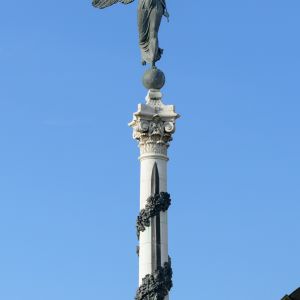Victory Monument
Sightseeing attraction | Bolzano | Trentino-Alto Adige | Italy
Victory Monument - A Controversial Relic of History in Bolzano
The Victory Monument in Bolzano, the capital of South Tyrol, is one of the most striking and at the same time controversial buildings in the region. Built during the fascist rule in Italy, the monument remains the focal point of historical and political debates to this day. As a symbol of Italian dominance after World War I, it was a point of contention between the German-speaking and Italian-speaking populations of South Tyrol for decades. Today, it serves as a memorial and historical document that reminds us of the region's tumultuous past.
Historical Context and Construction
The Victory Monument was built in 1928 during the dictatorship of Benito Mussolini. The construction was meant to symbolize the Italian victory over Austria-Hungary in World War I, which resulted in South Tyrol becoming part of Italy. With the intention of demonstrating Italian dominance in the region and pushing for the integration of South Tyrol into the Kingdom of Italy, the monument was erected at the site of a former Austrian Kaiserjäger memorial that was demolished after the war.
The design of the monument was by the famous architect Marcello Piacentini, a leading figure in fascist architecture. The Victory Monument was built in a neoclassical style typical of fascist architecture - monumental, symmetrical, and with clear references to ancient Rome.
Architectural Features
The Victory Monument is an imposing triumphal arch, reminiscent of ancient Roman architecture. It is made of solid white limestone and sits on a wide platform with several steps. The facade is marked by powerful columns and a central inscription in Latin that proclaims:
*"Hic patriae fines siste signa. Hinc ceteros excoluimus lingua legibus artibus"*
This inscription reflects the imperialistic and nationalist character of the monument and was a provocation for the German-speaking population of South Tyrol for decades.
At the top of the monument sits an oversized bronze statue of the goddess of victory, Victoria, holding a laurel wreath aloft - a classic symbol of triumph and domination.
Political Controversies and the Role of the Monument in South Tyrol
Since its construction, the Victory Monument has been a politically charged symbol. For the Italian government and nationalist movement, it served as a display of power, while for the German-speaking population of South Tyrol, it was seen as a sign of oppression and forced Italianization.
Especially in the decades following World War II, when South Tyrol demanded autonomy rights, there were repeated protests against the monument. In the 1960s, there were even bomb attacks carried out by South Tyrolean separatists targeting Italian dominance in the region.
After the extensive granting of autonomy to South Tyrol through the South Tyrol Package in the 1970s, the political significance of the monument was gradually diminished, but it remained a sensitive issue. It was only in the 2000s that a sustainable approach to the monument was found.
New Approach to History - Conversion into a Historical Documentation Center
Instead of demolishing the monument or continuing to ignore it, the city of Bolzano, in collaboration with historians and the regional government, decided to transform the Victory Monument into a historical documentation center.
Since 2014, there has been a permanent exhibition below the monument titled "BZ '18–'45: A Monument, a City, Two Dictatorships," which critically examines the history of the monument as well as the time of fascism and Nazism in South Tyrol. The exhibition depicts how the monument was used as a tool of political power, but also how South Tyrolean society has evolved over time.
Through this new approach, the monument has been transformed from a symbol of division into a place of reflection and dialogue. Visitors can now gain a multifaceted perspective on the past and understand how the monument is embedded in the historical context of fascism, war, and struggles for autonomy.
Conclusion
The Victory Monument in Bolzano is much more than just a monument - it is a reflection of the turbulent history of South Tyrol and a testament to the political conflicts that have shaped the region for decades. While once used as an instrument of power demonstration, it is now used as a memorial that encourages engagement with the past.
































































































































